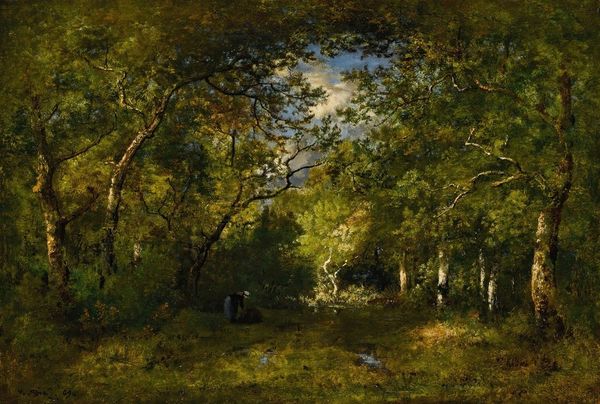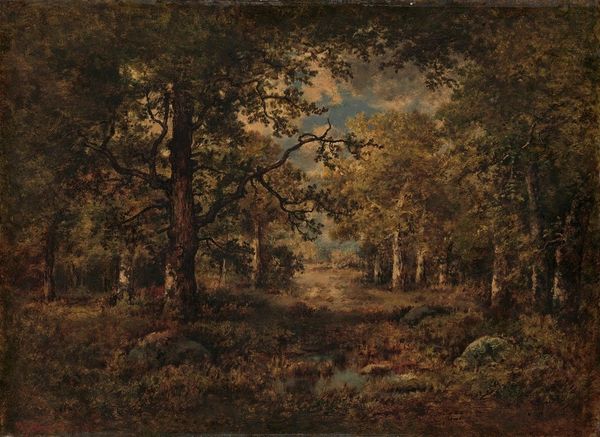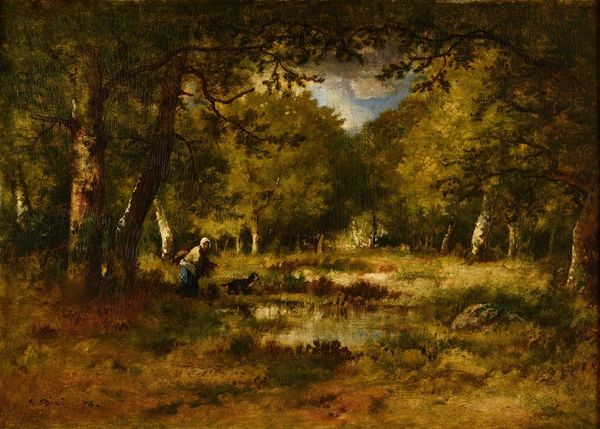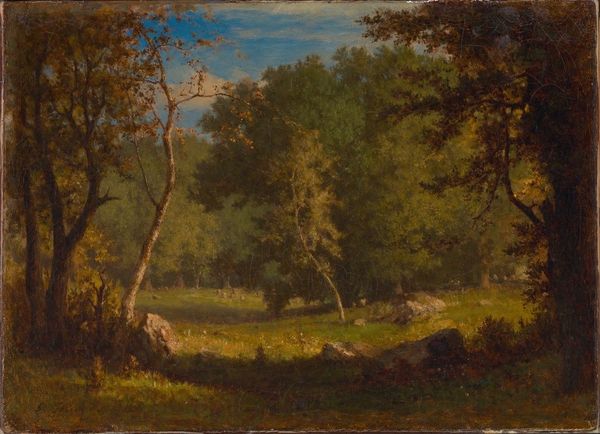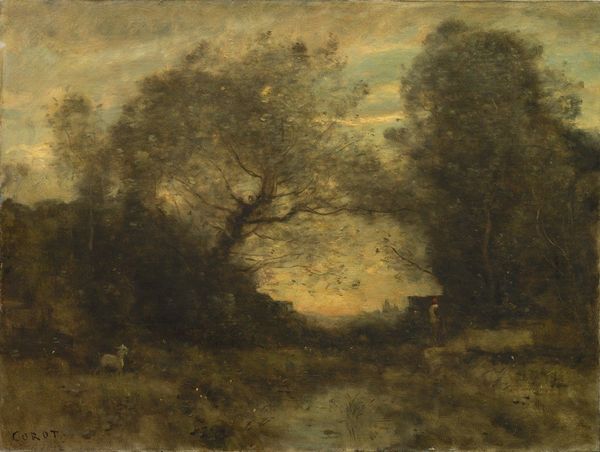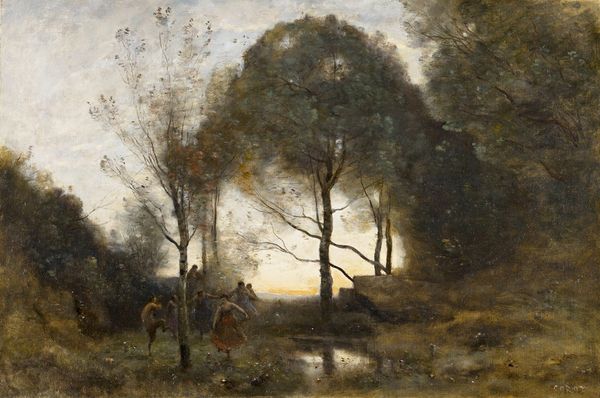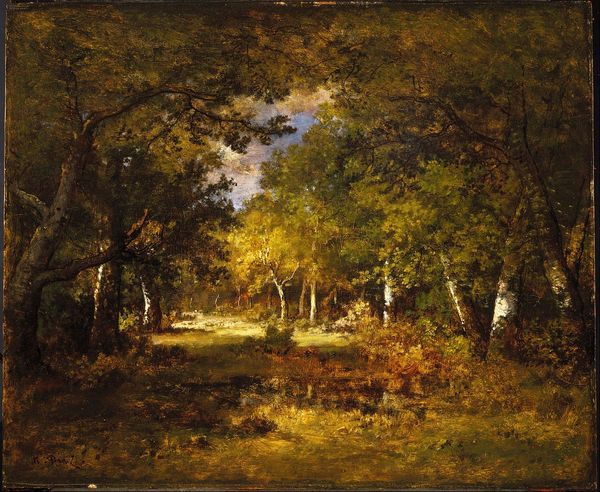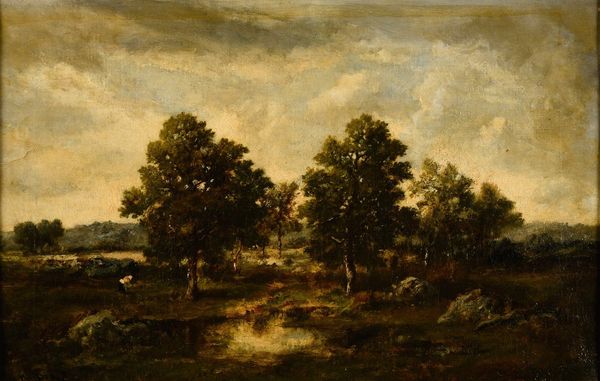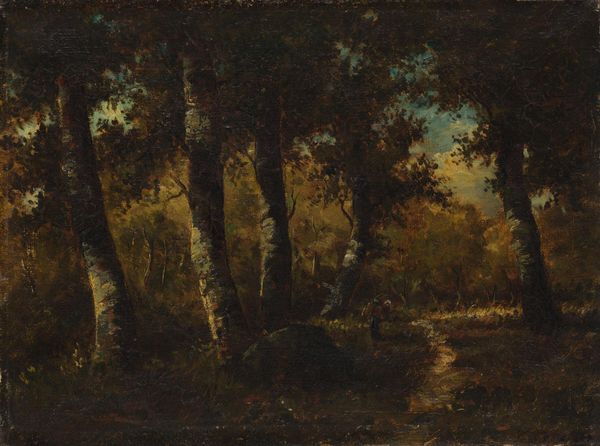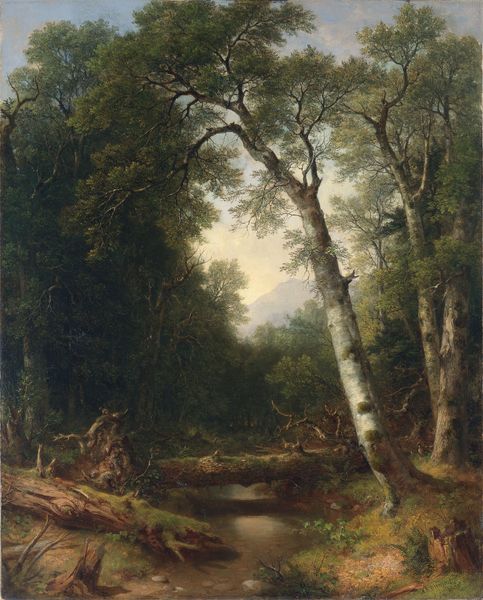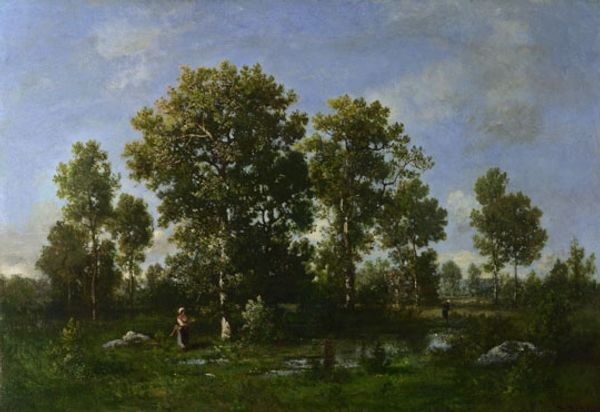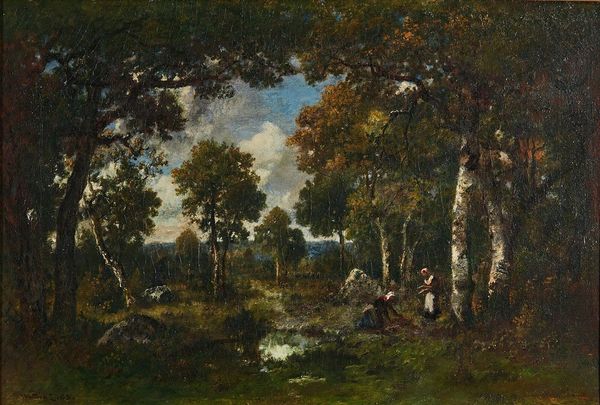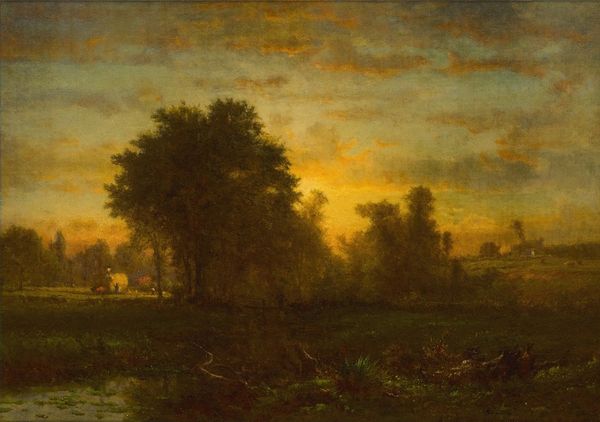
painting, plein-air, oil-paint
#
painting
#
impressionism
#
plein-air
#
oil-paint
#
landscape
#
realism
Copyright: Public Domain: Artvee
Editor: So, this is Narcisse Virgilio Díaz’s “The Forest of Fontainebleau,” painted in 1874, using oil paints. The atmosphere feels heavy, almost melancholic. The woman in the painting seems dwarfed by the immensity of the forest around her. How do you read the piece? Curator: I see this not just as a landscape, but as a visual comment on women’s relationship to nature and labor in the 19th century. Diaz situates this lone figure – likely a peasant woman gathering wood – within a grand, almost overpowering landscape. Consider the pre-industrial era context; can this scene also depict class disparities where working women found autonomy within nature but remained isolated from the booming progress within urban environments? What does the darkness enveloping her represent in the composition and her life? Editor: That’s an interesting way to look at it. I was only considering it as an Impressionist take on Realism, influenced by the Barbizon school. The light dappling through the trees just seemed to be about capturing a fleeting moment, but I see your point about labor and societal power dynamics. Curator: Absolutely, the formal aspects are key but the plein-air style also means the painter captured the landscape and peasant life with fresh eyes, removed from academic tradition. Think of it as an invitation to a new visual language, yet grounded in representing the real lived experiences. How does it connect with broader cultural dialogues on rural life and the burgeoning feminist movements of that time? Editor: I hadn’t considered that at all. It’s making me think about other paintings from that period that depict women working in fields. Maybe there’s a quiet commentary here on the changing roles of women in society. Curator: Precisely! And perhaps, a celebration of the strength and resilience found in the margins. The Forest of Fontainebleau becomes a space to examine not just what is seen, but what the social fabric concealed and revealed. Editor: Well, I'll certainly never look at another landscape painting the same way. It has broader relevance now.
Comments
No comments
Be the first to comment and join the conversation on the ultimate creative platform.
